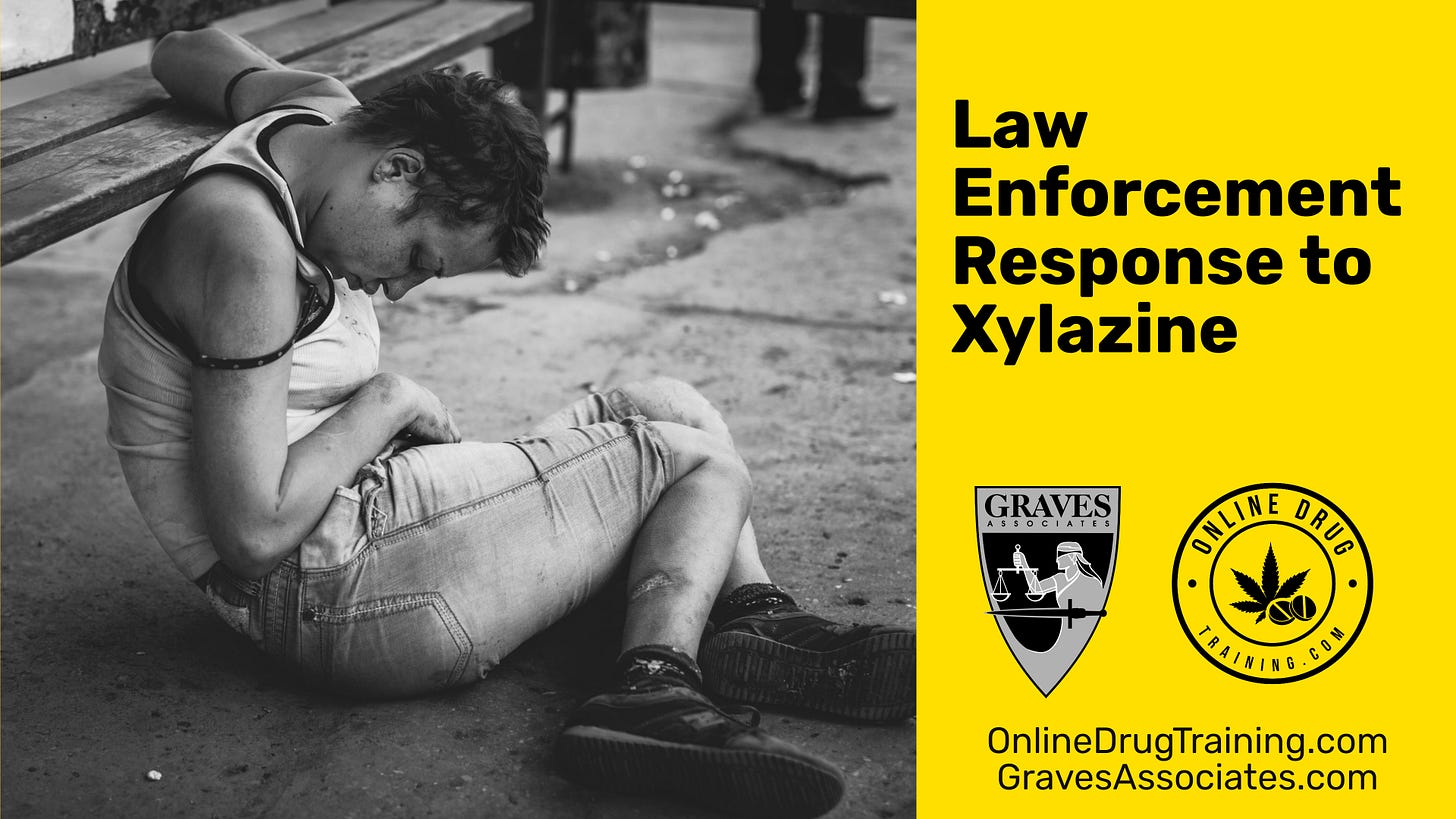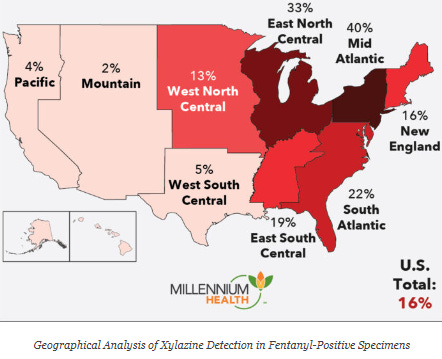Zeroing in on Xylazine - A New Threat in the Opioid Crisis
Xylazine, commonly known as "tranq," is a non-opioid veterinary tranquilizer not approved for human use. It has similar effects to clonidine, causing marked sedation, muscle relaxation, and dangerous reductions in heart rate and blood pressure. Its repeated use can lead to withdrawal symptoms and severe skin ulcers. The drug has exacerbated the U.S. overdose epidemic, with the DEA reporting a rise in xylazine identifications and associated deaths between 2020 and 2021. It is often added to illicit fentanyl to prolong and enhance its euphoric effects.

The Emerging Threat Designation
On April 12, 2023, the Biden Administration designated fentanyl adulterated or associated with xylazine as an emerging threat to the nation. A new Millennium Health Signals Report analyzed over 160,000 urine drug test (UDT) results and found that nearly all xylazine-positive specimens also contained fentanyl.
Geographical Analysis
National Trends: Over 99% of xylazine-positive specimens also contained fentanyl.
Regional Variations: The highest rates of xylazine use were in the Mid-Atlantic and East North Central divisions, while the lowest were in the Pacific and Mountain divisions.
State-Specific Data: Pennsylvania, North Carolina, and Ohio had the highest xylazine positivity rates.
Polysubstance Use
Polysubstance use is common among fentanyl users, and it's even higher among those who also use xylazine. Over 10% of those who used xylazine had also taken other sedating drugs like alcohol, gabapentin, and benzodiazepines, which do not respond to naloxone.
Conclusions
The report suggests that xylazine and fentanyl use are closely intertwined, complicating overdose response efforts and making opioid use disorder treatment more challenging. There is a need for increased awareness among clinicians and public health officials, and geographical changes in xylazine use should be closely monitored.



